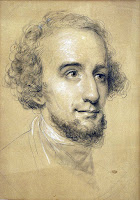
(RoDP) The Susquehanna Museum would like to invite you to this years museum re-opening. Please join them at 1:00 pm on April 10 on the grounds of the Lock house to celebrate the beginning of the 2010 museum season. Come tour our new exhibits highlighting the War of 1812, a virtual ride along the Susquehanna and Tidewater Canal, and the evolution and development of Havre de Grace. Continued
Photo: Falmanac




















































